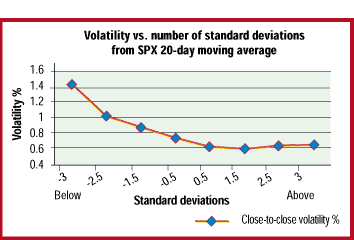Take Advantage Of Investor Biases
Behavioral Force
by David Schimel, M.D.
Evidence now exists to refute the long-held belief that stock price variations are random and unpredictable. Numerous studies have shown that the collective reactions of investors to price variations create a powerful behavioral force that affects stock price movement. Using this as a premise, we conducted an extensive study and developed an algorithm to measure the behavioral force. We present the findings here.
BEHAVIORAL FORCE
Price movement results from the collective behavior of investors when they must make subjective assessments of a stock's value. As the prices of equities fluctuate, most shareholders feel the urge to do something. The trouble is, they're not sure what to do or when to do it. But stock price movements are influenced by investor biases that form in reaction to changes in stock prices. Behavioral force is a discipline that ascribes market action to irrational human behavior. It attempts to explain stock market anomalies, like the stock market correction of 1987 and the Nasdaq bubble of 2000, as a function of this irrational behavior.
Behavioral finance measures how investor thinking is influenced by emotion and misperception, which leads to irrational decision-making. There are many circumstances in which a stock's price may vary from its real value because of the biases of market participants. When market participants are confronted with no new information -- other than changing stock prices -- they react in a biased but predictable manner. The collective reactions of investors to price variations create a behavioral force that causes stocks to be incorrectly priced relative to their true value.

FIGURE 1: CHANGE IN VOLATILITY. Volatility increases when prices move below the 20-day moving average.
...Continued in the September 2002 issue of Technical Analysis
of STOCKS & COMMODITIES
Excerpted from an article originally published in the September 2002 issue of Technical Analysis of STOCKS & COMMODITIES magazine. All rights reserved. © Copyright 2002, Technical Analysis, Inc.